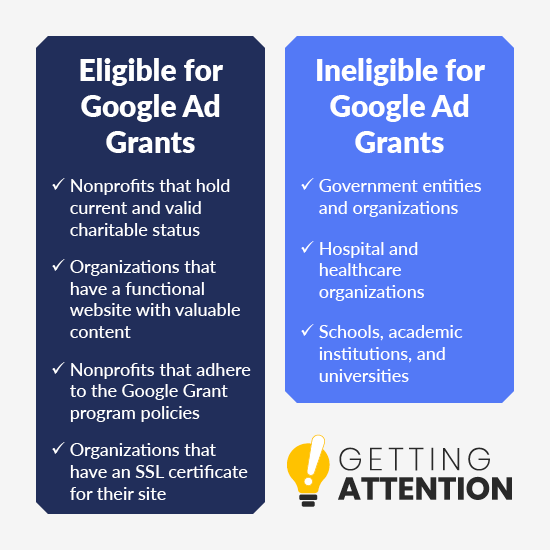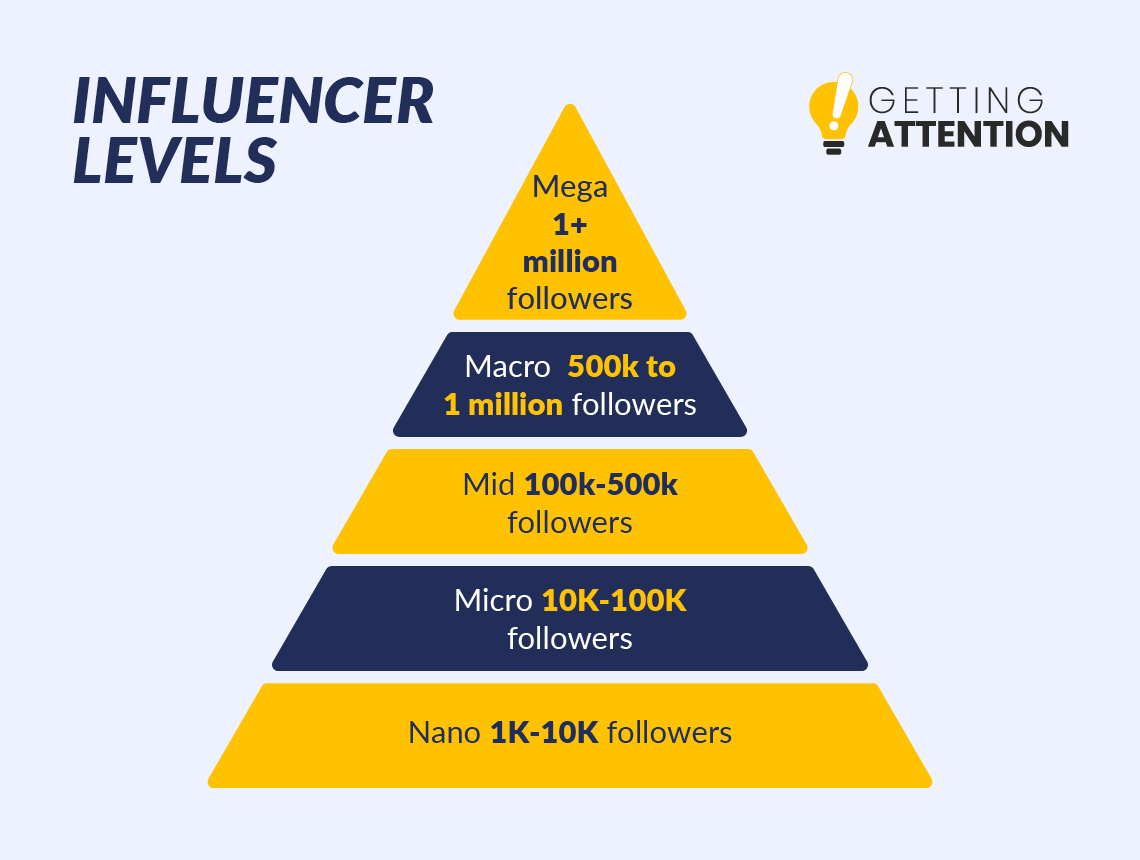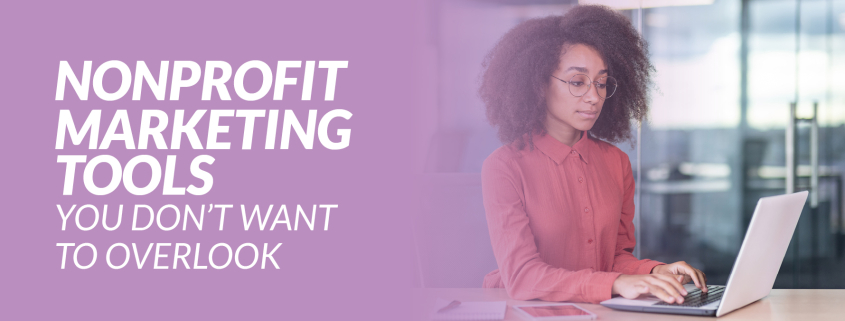5 Nonprofit Marketing Tools You Don’t Want to Overlook
Marketing brings your nonprofit’s mission to a wide audience, helping you earn valuable donations, spread awareness of your cause, and build long-lasting supporter relationships. Most nonprofits seek to achieve this through email marketing, text messages, social media ads, and the occasional phone call.
However, marketing research shows nonprofits are sending more emails for fewer positive outcomes and struggle to make up their return on investment for social media ads. That doesn’t mean abandoning these channels but instead looking for new marketing tools to expand your strategy.
In this guide, we’ll explore five marketing tools for nonprofits that your organization might be overlooking!
1. Google Ads
When it comes to digital ads, nonprofits should look for platforms with large audiences, sophisticated targeting tools, and reduced costs for nonprofits. With these factors in mind, Google Ads are pretty unbeatable.
Nonprofits that enroll in the Google Ad Grants program earn $10,000 in monthly credits to spend on Google Ads. Many nonprofits in the Google Ad Grants program struggle to hit this spending target, meaning your organization can likely advertise on Google for free.
But first, make sure your nonprofit is eligible. Getting Attention’s guide to applying for the Google Grant outlines the basic qualification guidelines:

- Eligible.Organizations that are registered as nonprofits in their country (in the U.S., this means being a 501(c)(3) organization), have a functional website, follow proper web security measures, and agree to the Google Grant’s program policies are eligible.
- Ineligible. Government entities, healthcare organizations, and schools are ineligible for the Google Ad Grant. However, the fundraising branches of hospitals and schools may be eligible, depending on their organization’s structure.
To start the application process, your nonprofit will need to make a Google for Nonprofits account. This should be a simple process as long as your organization is a registered nonprofit and owns its website domain.
Next, evaluate your website to pinpoint opportunities for improvement. Not only does Google require applicants to have websites with valuable and original content, but Google Ads will only succeed if they link to valuable landing pages. Consider what pages you want to promote and get to work improving them before submitting your Google Ad Grant application!
2. Search Engine Optimization
In addition to Google Ads, you can make your content easy to find by following search engine optimization (SEO) best practices. These strategies improve the chances your content will rank on search engine results pages (SERPs) and be shown to users searching relevant keywords.
A few SEO tips include:
- Using keywords strategically.SEO revolves around keywords, so ensure your content targets a few valuable keywords. Avoid keyword stuffing, which is the practice of needlessly repeating a keyword. Instead, use keywords carefully, such as in page titles, headers, and where natural in body text.
- Produce valuable content. Search engines want to show users high-quality content. By doing so, they can persuade audiences to continue using their search engine and clicking on top results. As such, ensure your content is original, relevant to your target audience, and reflects your organization’s unique perspective.
- Make your pages crawlable. On the technical side, make your content as easy for search engines to crawl as possible. “Crawling” is the process of scanning a web page to assess its content. Broken links and long redirect chains make crawling more difficult. If you have a Google Search Console account, you can submit your content for indexing, speeding up the crawling process.
For any search-based marketing strategies, such as SEO and Google Ads, ensure you have a strong understanding of your audience and their search habits. This will enable you to target keywords your supporters are likely searching for.
3. Influencer Marketing
Online influencers command massive audiences, with popular creators boasting millions of followers, subscribers, or viewers depending on their platform of choice. Even smaller creators with an audience of a few thousand can help nonprofits spread their mission.
When working with influencers, a few factors to consider include:
- Your goal. Why does your nonprofit want to work with an influencer? Is it to promote a year-end giving campaign, drive donations for a new project, or spread awareness about your mission to a new audience? Knowing what you hope to get out of your influencer partnership will guide you toward strong candidates. For example, YouTube and Twitch live streamers have the capacity to host fundraisers on your behalf, whereas an Instagram influencer may be more attuned to spreading awareness or directing traffic to your website.
- Audience interests. Assess the influencer’s audience to ensure they will likely be receptive to your cause. For example, an influencer famous for posting pictures of their cute dogs likely has an audience that will respond especially well to animal-related causes but may be lukewarm on other issues.
- Audience size. Influencer audiences range in size from nano-influencers with only about 1K-10K followers to mega-influencers with over 1 million followers. While larger audiences have more resources, it may be more difficult to contact influencers above a certain size.

Remember, even small influencers with passionate audiences can make a big difference. Just be clear about your expectations and be grateful for their help to make the partnership valuable for both parties.
4. Personalization
Supporters want to give to causes they feel connected to. As such, nonprofits should engage in direct marketing fundraising, which is a type of fundraising where messages are addressed to a specific donor. For example, an email addressed to your name is direct marketing, whereas a general call for donations on social media is indirect marketing.
Direct marketing leverages personalization to build strong, one-on-one connections with donors. Use your donor database to track information about individual donors so you can address them by name and reference their past contributions in your communications with them.
Additionally, segment your audience into groups based on your marketing strategy. For example, you might group donors by age and send donors who are around retirement age information on your planned giving program, young donors details about your volunteer program, and middle-aged donors invites to family-friendly events.
Essentially, segmentation helps your messages resonate with various audiences, while personalization ensures each individual message is relevant to its recipient.
5. Cause Marketing
If your nonprofit has ever worked with corporate sponsors before (or is considering doing so for the first time), look for partners willing to do a cause marketing campaign.
Cause marketing is a type of corporate philanthropy wherein businesses promote and contribute to a good cause, usually by donating a portion of sales for a specific product to a nonprofit. For instance, 360MatchPro shares several cause marketing examples:
- Ross Dress for Less. Ross runs two annual cause marketing campaigns to help local Boys & Girls Clubs. First, cashiers are directed to ask customers if they would like to make a donation during checkout, often by rounding up their sales total to the nearest dollar. The other is Ross’s “Help Local Kids Learn” fundraiser, in which Ross locations set up in-store information booths with activities related to childhood education.
- Patagonia. Patagonia’s 1% for the Planet program ensures 1% of sales are donated to Patagonia’s nonprofit partners. Patagonia also promotes various causes and ongoing campaigns on its website.
- Pringles. To spread awareness for men’s mental health, Pringles partners with the nonprofit Movember and launches a special line of Pringles cans that feature a QR code to Movember’s website. Through this link, visitors can access mental health resources and donate.
These businesses each take different approaches to cause marketing, and the exact details of your cause marketing campaign will need to be worked out with your corporate partner. Consider their interests, as well as your nonprofit’s.
For example, do you want to raise awareness, earn donations, or expand your volunteer program? As for your corporate partner, they are probably looking for a reputation boost and a campaign that’s easy and cost-efficient to put together. For one business, that might involve launching a new product line, whereas another might create a special marketing campaign to promote the partnership.
Marketing tools, channels, and strategies arm your nonprofit with the tools it needs to reach new audiences and solidify its connection to current supporters. Start expanding your marketing toolkit by looking into these channels and deciding if they’re right for your organization.




